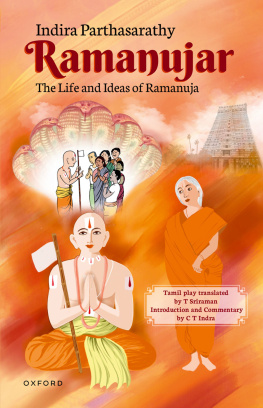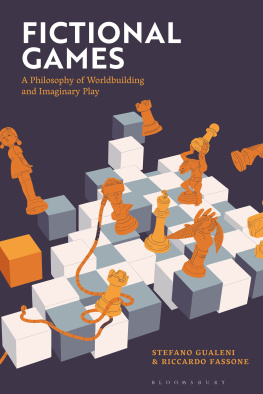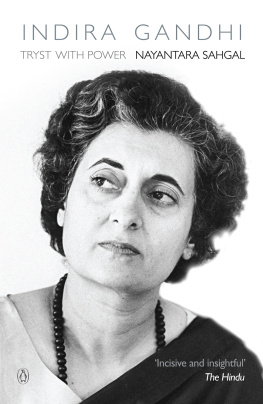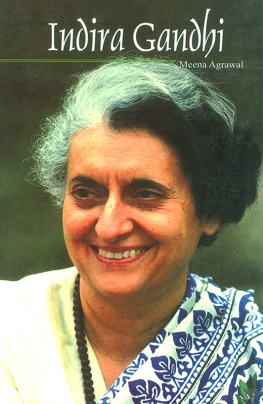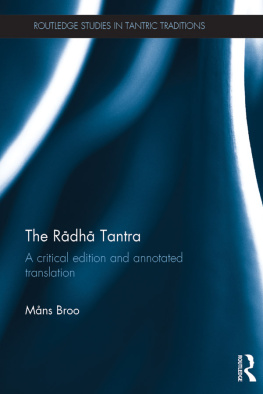Ramanujar

Great Clarendon Street, Oxford, OX2 6DP,
United Kingdom
Oxford University Press is a department of the University of Oxford. It furthers the Universitys objective of excellence in research, scholarship, and education by publishing worldwide. Oxford is a registered trade mark of Oxford University Press in the UK and in certain other countries
Oxford University Press 2023
The moral rights of the authors have been asserted
First Edition published in 2008
Second Edition published in 2023
Impression: 1
All rights reserved. No part of this publication may be reproduced, stored in a retrieval system, or transmitted, in any form or by any means, without the prior permission in writing of Oxford University Press, or as expressly permitted by law, by licence or under terms agreed with the appropriate reprographics rights organization. Enquiries concerning reproduction outside the scope of the above should be sent to the Rights Department, Oxford University Press, at the address above
You must not circulate this work in any other form and you must impose this same condition on any acquirer
Published in the United States of America by Oxford University Press
198 Madison Avenue, New York, NY 10016, United States of America
British Library Cataloguing in Publication Data
Data available
Library of Congress Control Number: 2022952442
ISBN 9780192871541
eISBN 9780192699428
DOI: 10.1093/oso/9780192871541.001.0001
original Tamil language work Indira Parthasarathy 2023
Links to third party websites are provided by Oxford in good faith and for information only. Oxford disclaims any responsibility for the materials contained in any third party website referenced in this work.
C.T. Indra and T. Sriraman dedicate this book to their Acharyan, the late Professor V.S. Seturaman
Contents
In the fall of 2018, I taught a seminar at Harvard University, entitled The Complete Hindu Theologian: Rmnuja (10171137) as Intellectual, Devotee, and Reformer. With a group of about a dozen graduate students, we read selectively key portions of the Vedrthasagraha, the Gtbhya, rbhya, and also the Gadyatraya and Nityagrantham. We read a range of traditional sources, from portions of the Koil Oluku, and Vednta Deikas Yatirja Saptati, to modern expository and controversial works on the crya. We even looked at the Amar Chitra illustrated portrayal of his life. I and my team of earnest and hardworking students thus sought to understand Rmnuja as intellectual, devotee, and reformer, weaving a rich context from his works and how he has been remembered in tradition.
The course would have been incomplete without bringing into it, toward its end, Indira Parthasarathys remarkable Ramanujar, translated as Ramanujar: The Life and Ideas of Ramanuja. This drama, though simple and easy to follow, vividly brings Rmnuja to life as a person, retelling famed incidents in his life, now enacted in a dramatic form.
So ably translated by Dr T. Sriraman, the play reads very well in English and easily captures the readers interest and attention. Dr C.T. Indras erudite introduction on history, hagiography, and Rmnuja is a gem in itself, as are her many explanatory notes that give the reader so much background and clarifying information. The introduction and notes were in fact important course readings in themselves.
In class we enjoyed discussing the dramatization put forward in this modern retelling of the story, its portrayal of Rmnuja as a social reformer, and thus too the creation of a progressive Rmnuja so much needed in modern India. We even read aloud several acts of it in one of the last class meetings. I was particularly happy when, near the end of the course, Dr Indra and Dr Sriraman sent me the new short text in which Rmnuja and his wife, both in their old age, meet again after many years and confront the painful issues that led to their separation early on. I did not attempt a full translation of it, but gave the students the gist of it. Though fictional, it gave satisfying closure to the episode that has naturally bothered many students: Rmnujas abrupt dismissal of his wife due to their argument over caste and hospitality. I am glad that this new edition will include that valuable and timely text in translation as an Epilogue, without which the story is incomplete.
A month before teaching the seminar, I was honoured to spend a few days at a conference at the Hyderabad ashram and school founded by r Tridai rmannryaa Rmnuja Chinna Jeeyar Swmiji. The ashram is of course also the site of the very large and impressive Statue of Equality, erected to mark the millennial celebration of the cryas 1017 birth. Swamiji has spoken eloquently about the importance of Rmnuja for twenty-first century India, proposing that we think of him as a figure of modern relevance, a respecter of society and human values, and proponent of an inclusive Hinduism that respects all traditions.
It is fitting that, in the same spirit, Indira Parthasarathys Ramanujar is now made available to an even wider public in this new edition, given the urgent need for a deepening of religious learning and values in todays society.
Francis X Clooney, SJ
Parkman Professor of Divinity and Professor of Comparative Theology
Director, Center for the Study of World Religions, 201017
Harvard Divinity School, Harvard University
I am deeply grateful to Mr Hariharan and Dr Meenakshi Hariharan for taking a keen interest in this work and obtaining invaluable materials on Ramanuja from various libraries. Meenakshi also acted as my sounding board as well as amanuensis during the year-long struggle to write a critique and textual commentary on the play. I am grateful to Professor A.A. Manavalan for obtaining a copy of Professor M.S. Govindasamys Endowment Lecture and to my teacher Professor S.N. Kandaswamy for providing me with a published version of the same lecture just in time. My thanks are due to Professor V.K.N.S. Raghavan of the Vaishnavism department at the University of Madras for explaining certain recondite passages on Vaishnavism. Professor M. Narasimhachary, the first professor of Vaishnavism at the University of Madras, graciously gifted me a copy of his biography of Ramanuja. My sincere thanks to a devout Sri Vaishnavite who would like to remain unnamed, for the precious professional help of furnishing me with a copy of the Guruparamparai Prabhavam 6000. Last but not the least, I am indebted to Dr Chitra Madhavan who directed me to the important epigraphical work by , which helped give a fresh direction to my critique.
C.T. Indra
2008
I would like to thank Sri Indira Parthasarathy for kindly permitting me to translate this play. I am grateful to Smt Sowbhaghyalakshmi, principal of Sri Sadagopan Tirunarayanaswami Divya Prabandha Pathasala, Chennai, for according permission to use the translations of pasurams from the late . I thank my brother-in-law, Sri V.S. Viraraghavan, for his help in resolving several difficulties that I encountered in the course of translation and for the constant affectionate encouragement that he has given me.
T. Sriraman
2008
We are extremely grateful to Rev. Fr. Francis Clooney, Parkman Professor of Divinity and Professor of Comparative Theology, Harvard Divinity School, Harvard University, for so graciously providing a Foreword to this edition. That he included Indira Parthasarathys play in the course readings for a seminar on Ramanuja as devotee, intellectual, and reformer bears testimony to the significance of Indira Parthasarathys work in the Ramanuja lore now available.

